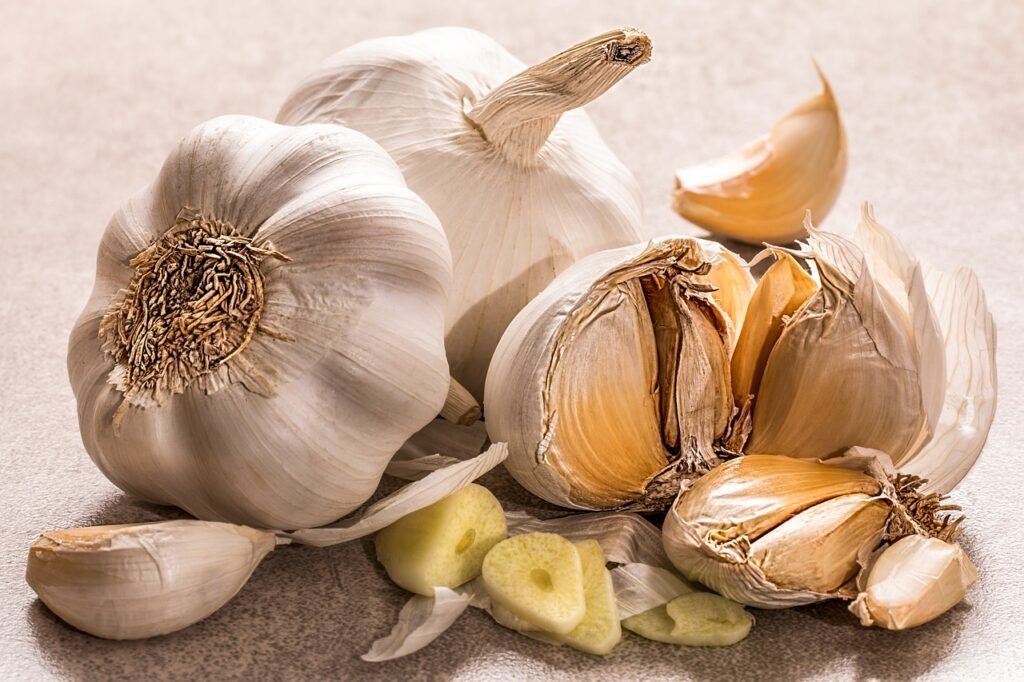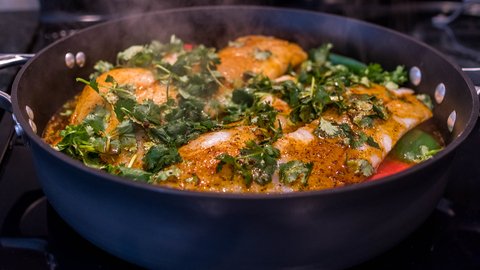Couscous with garlic and olive oil is a simple yet flavorful dish that can elevate any meal. This recipe requires just a few ingredients, including couscous, water or broth, garlic, olive oil, dried thyme, paprika, and black pepper. Perfect as a side dish or a light main course, it provides a quick option for busy cooks who want to impress without spending too much time in the kitchen.
The rich aroma of garlic and the smooth taste of olive oil infuse the couscous, creating a delightful combination that’s both satisfying and easy to enjoy. With minimal preparation, anyone can whip up this dish and enhance their dining experience.
What Is Couscous?
Couscous is a small, round pasta made from semolina wheat. It originated in North Africa and is a staple in many cuisines.
Couscous comes in various types, including:
- Regular Couscous: The most common form, often served as a side dish.
- Whole Wheat Couscous: A healthier option with higher fiber and nutrients.
- Giant Couscous (Israeli Couscous): Larger, pearl-shaped grains with a chewy texture.
Couscous absorbs flavors well, making it a versatile ingredient. It pairs nicely with various ingredients, from vegetables to meats.
People like couscous for its light texture and ability to complement many dishes. It can serve as a base for salads, stews, or simply as a side.

Ingredients:
Couscous:
- 1 1/4 cups of water or broth
- 1 cup of couscous
- 1 tsp of butter or margarine (optional)
- 1/2 tsp of salt (optional)
Topping:
- 2 minced cloves of garlic
- 1 tbsp of olive oil
- 1/2 tsp of dried thyme leaves
- 1/2 tsp of paprika
- 1/4 tsp of ground black pepper
How to make couscous with garlic and olive oil?
- Bring water to a rolling boil.
- Add couscous, butter, and salt to the boiling water.
- Remove from heat, cover, and let stand for 5 minutes.
- Heat olive oil in a pan.
- Add minced garlic and cook until browned.
- Add spices (optional) and cook for 30 seconds.
- Mix garlic topping into couscous.
- Serve hot immediately.
Serving Suggestions
- Grilled Vegetables: Add a medley of grilled zucchini, bell peppers, and eggplant for a colorful and nutritious side.
- Protein Options: Serve it alongside grilled chicken, shrimp, or firm tofu. These options complement the dish nicely.
- Fresh Herbs: Garnish with fresh parsley or cilantro for flavor. Chopped herbs elevate the dish.
- Salads: Combine couscous with a light salad. A Mediterranean salad with cucumbers, tomatoes, and feta works beautifully.
- Spicy Kick: Drizzle a bit of chili oil for a spicy touch. It adds warmth without overpowering the dish.
- Nuts and Dried Fruits: Mix in toasted almonds or raisins for added texture and sweetness. They create a delightful contrast.
- Bread: Serve with warm pita or crusty bread. This makes for a hearty meal that’s great for sharing.
Pairing with Other Dishes
Here are some ideal pairings:
- Grilled Chicken: The flavors of garlic and olive oil enhance the seasoning of grilled chicken, creating a delightful meal.
- Ratatouille: The freshness of ratatouille contrasts nicely with the richness of the couscous.
- Fish: Grilled or baked fish, especially varieties like salmon or trout, pairs well, allowing the olive oil to shine.
- Vegetable Tagine: This Moroccan dish offers a flavorful match, as the spices mingle wonderfully with the garlic couscous.
Storing Leftovers
- Cool Down: Allow the couscous to cool to room temperature before storing. This prevents condensation in the container.
- Use Airtight Containers: Transfer the cooled couscous into airtight containers. This helps maintain moisture and flavor.
- Refrigerate: Store the containers in the refrigerator. The couscous stays fresh for up to 3-4 days.
- Freeze for Longer Storage: For extended storage, couscous can be frozen. Place it in freezer-safe bags, removing as much air as possible. It will keep well for 1-2 months.
Reheating Tips
- Thawing: If frozen, thaw the couscous overnight in the refrigerator before reheating.
- Microwave: Reheat in the microwave, adding a splash of water to prevent dryness. Heat at medium power in short intervals.
- Stovetop Option: Alternatively, heat on the stovetop with a drizzle of olive oil for added flavor.
Common Mistakes to Avoid
- Using Too Much Water: Excess water can turn couscous mushy. Aim for a 1:1 ratio of water to couscous for perfect texture.
- Skipping the Steam Step: Not allowing couscous to steam properly after cooking can result in clumpy grains. Steaming enhances texture and flavor.
- Neglecting Seasoning: Couscous can be bland without proper seasoning. Incorporate salt into the water and consider adding garlic or herbs for depth.
- Overcooking: Overcooked couscous can lose its appealing bite. Follow package instructions closely and check for doneness.
- Ignoring Oil: Olive oil adds flavor and prevents sticking. Drizzle it generously after cooking for the best results.
- Forgetting About Resting Time: Allowing couscous to rest for a few minutes after cooking helps to lock in moisture. This step is essential for achieving a fluffy texture.
- Using Cold Ingredients: Adding cold garlic or oil can shock the couscous. Use room temperature ingredients to maintain warmth and flavor.
Conclusion
Couscous with garlic and olive oil offers a delightful combination of flavors and textures. This dish is not only simple to prepare but also versatile.
This dish highlights the qualities of couscous, allowing the garlic and olive oil to shine through. Perfect as a side or a base for other ingredients, it appeals to many tastes.
Couscous with garlic and olive oil stands out as a delicious, approachable dish that brings comfort to the table. Enjoying it is simple, and preparing it is even simpler.
As already mentioned, this couscous is perfect to pair with spicy Moroccan fish
Get that recipe now (by clicking the image below):





